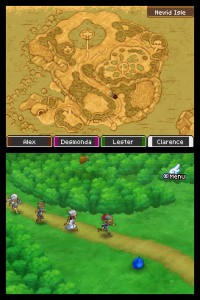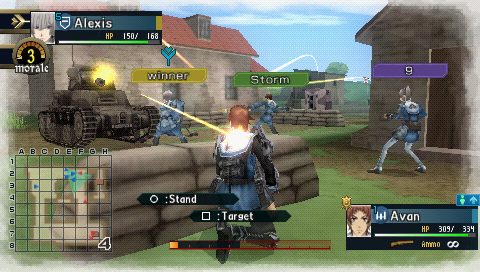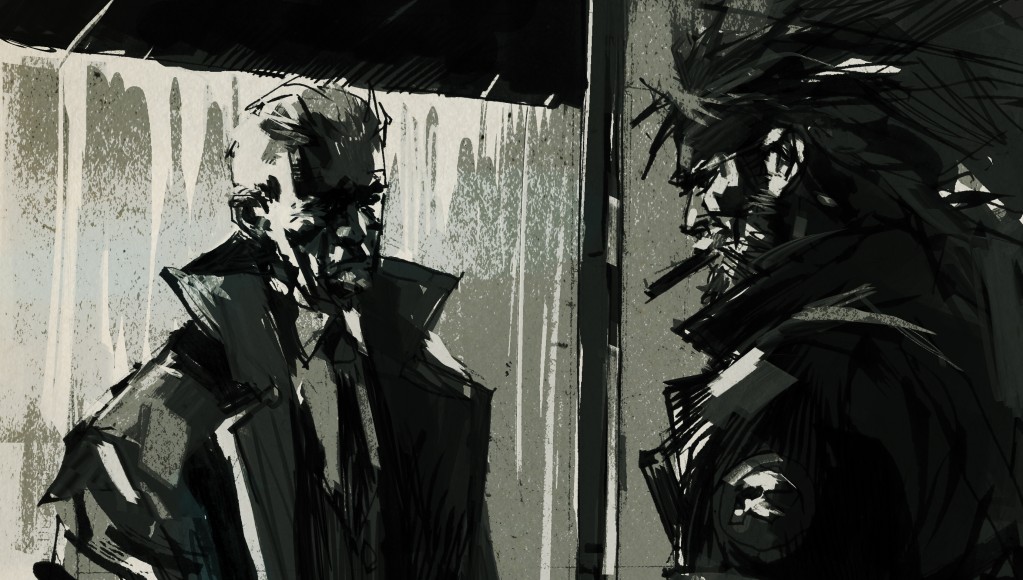If you’re heading out of town for the summer’s last big travel weekend but short on diversions, for yourself or your kids, it’s been a banner summer for handheld games. I’ve spent the unofficial last week of summer visiting friends and family in Wisconsin and Minnesota, and have spent my travel time and late nights getting reacquainted with my DS and PlayStation Portable. Here’s what I’ve been enjoying:
Before I left town, I ordered a copy of “Dragon Quest IX: Sentinels of the Starry Skies” (rated E10+, $35 on DS) for my 9-year-old nephew, ignoring the ESRB rating because I thought giving him a text-heavy role-playing game would get him reading more than he would otherwise. I brought my copy along for the plane and the hope that Keondre and I would be able to team up via the game’s Tag Mode for some co-op adventuring.
“DQIX” plays the way gaming veterans would expect a game with its Roman numeral to play, like an old-school, party-based role-playing game. The main character assembles a group of companions and sets out to bring order to turbulent times, talking with villagers to get quests and upgrading skills and equipment. At the game’s outset, you’re an angel-like being tasked with watching over a village. But then a celestial cataclysm strips you of your wings and halo and forces you to tend your flock as their equal while trying to uncover what happened to you.
Slightly older players or veterans of games like “DQIX” might look to “Valkyria Chronicles II” (rated T, $40 on PlayStation Portable), released Tuesday.
Like the first “Valkyria Chronicles,” a PS3 cult classic from 2008, “VCII” is set on the fictional continent of Europa, a stand-in for World War II-era Europe. But where the first game tasked you with repelling an invasion of Gallia, “VCII” puts you in charge of a bunch of struggling students at a military academy charged with quelling a civil war within the neutral nation.
While the stylized, watercolor anime art style of the first game returns for the handheld sequel, the military academy setting gives the game a bit of a lighthearted high school feel, complete with school uniforms, cliques and petty squabbles. These trappings can irritate at times, but they’re largely irrelevant because “VCII” is a fantastically deep strategy game.
The in-game movies and storytelling bridge increasingly elaborate, turn-based battles in which you deploy customized squads and maneuver them around the battlefield, mindful of their strengths, rapport with other team members and ability to duck behind cover or crawl through the grass. Between battles, you can research new weapons and abilities, level up and perform optional side missions.
Gamers seeking a bit more action should look to “Metal Gear Solid: Peace Walker” (rated T, $40 on PSP). This stealth-oriented game has Snake sneaking into Costa Rica in the early ’70s and investigating what the CIA and KGB are up to. Though the game’s events are fictional and often ridiculously fantastical, there’s enough real-life history/geopolitical intrigue underpinning the game to intrigue teens old enough to appreciate it.
In between all the sneaking around and optional killing (like past “Metal Gear Solids,” it’s possible to finish “Peace Walker” without taking a life), you’ll retreat to your base, research new technologies and upgrade your equipment. You’ll also do more than your share of viewing in-game movies that unfurl a complicated plot. Thankfully, they’re all done in a style reminiscent of a comic book or graphic novel.
The only caveat with “Peace Walker” is that your first session needs to last between 45 minutes and an hour. There’s a lot of tutorial and introductory in-game movies to watch at the beginning of the game, with no opportunity to save after each section. I screwed up, assumed the game was autosaving and had to play the first section of the game twice.
My copy of “Ivy the Kiwi?” (rated E, $20 on DS) is still en route, but I’m expecting it to show up in time for my return trip. The budget-priced title was developed by Yuji Naka, the lead programmer for the original “Sonic: The Hedgehog” and features a baby bird who’s trying to find his mother. The trick is that the player doesn’t control Ivy, who moves through the levels at a set pace. Instead, you use the DS’ stylus to draw vines on screen and keep the chick out of harm’s way. I’m expecting it to play like other old-school mashups of platform jumping and puzzles, like “Solomon’s Key,” the first game in the genre I really became obsessed with. If you don’t have a DS, “Ivy’s” also available on Windows Mobile phones and Wii.



